Tag Archive for: immunotherapy
What Are the ASH 2022 Takeaways for AML Patients?
What Are the ASH 2022 Takeaways for AML Patients? from Patient Empowerment Network on Vimeo.
What do acute myeloid leukemia (AML) patients need to know about ASH 2022 updates? Dr. Catherine Lai from Penn Medicine discusses updates presented at the conference. Learn about combination treatments and a study that examined the use of chemotherapy before transplant.
[ACT]IVATION TIP from Dr. Lai: “There are a lot of new, exciting therapies that are coming out, and that it’s really novel sequencing strategies and combinations that I think will be the future of AML.”
Download Resource Guide en español
Related Resources:

What AML Treatment Options Are Available for MRD-Positive Patients? |
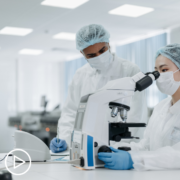
|

|
Transcript:
Art:
Dr. Lai, I had a transplant almost 30 years ago for relapsed AML and was not given intensive chemotherapy to get me into remission before the transplant. What are the takeaways from the ASH 2022 meeting? Is less more when treating AML?
Dr. Catherine Lai:
Sorry, that’s a great question, and what I just like to say that it’s so great that you are doing so well, so many years after, as you know, transplant is the original form of immunotherapy and is still the only potential cure for AML. And so with that being said, with at ASH what was seen was, I think a handful of things, so what I would say is that different combinations of drugs being used, so things looking at either at novel doubles and or triplets. Meaning combinations of two or three different drugs and how toxicity is affected, there are other also novel immunotherapies that are out there, not have been as groundbreaking as transplant, and I think that there is some way to harness the immune system to make treatment more effective, we just haven’t found that. Right, chemotherapy.
And then specifically, there was a large study, a large European study that was presented as the plenary session at ASH that talked about the role of chemotherapy before transplant. And what I would say, just speaking in general, is that the new immune system that a patient gets when they get a transplant takes…the new immune system, when a patient gets a transplant, it takes some time to take over, and that new immune system is able to fight off the leukemia, and so if a patient has a slow-growing leukemia, they might not need as much chemotherapy before the transplant, because the rate at which the leukemia will grow and won’t overburden the body before the new immune system takes over.
So I think that study was very provocative and gave some insight, but I still don’t think we have the complete right answer as to what chemotherapy should be used before transplant, I think that’s really tailored to each individual patient.
And then whether or not patients need chemotherapy after transplant also depends on disease burden and status, and taking into account measurable residual disease as well. So I would say the activation tip from the ASH 2022 meeting was that there are a lot of new, exciting therapies that are coming out, and that it’s really novel sequencing strategies and combinations that I think will be the future of AML.
Share Your Feedback About [ACT]IVATED AML
How Can You Access Personalized Medicine for Non-Small Cell Lung Cancer?
How Can You Access Personalized Medicine for Non-Small Cell Lung Cancer? from Patient Empowerment Network on Vimeo.
What is the right therapy for your non-small cell lung cancer? This animated video reviews treatment decision considerations, the importance of biomarker testing, and steps to engage in your non-small cell lung cancer care.
See More From INSIST! Lung Cancer
Related Resources:
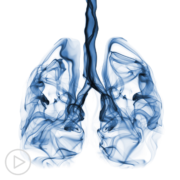
|

|

|
Transcript:
No two people with lung cancer are the same, so finding the right treatment for each patient is critical.
While receiving a non-small cell lung cancer diagnosis and choosing a therapy can be overwhelming, advancements in research are providing more options and more hope than ever.
So, what should be considered when making a treatment decision? Physicians may consider factors such as:
- A patient’s age, overall health and any pre-existing conditions they have.
- As well as their type and stage of lung cancer.
- And their test results, including biomarker testing.
Biomarker testing, also referred to as molecular testing, identifies key markers such as genes, proteins, or other molecules in a sample of tissue, blood, or other body fluid. Understanding the genetic makeup of the lung cancer helps your team better understand your disease and may influence treatment options – leading to more personalized care.
For example, if the PD-L1 receptor is detected during biomarker testing, the patient may benefit from immunotherapy. Additionally, identification of an ALK mutation or an EGFR mutation may indicate that a patient will respond to a targeted therapy.
So, how can you access personalized medicine? You can start by talking with your doctor about biomarker testing and ask if your cancer has been tested for all known biomarkers. Request to review the test results together and ask if there are any markers that affect your risk, prognosis, or treatment options.
Before you choose a therapy, weigh the pros and cons of each option with your doctor. Ask about side effects and if any of your existing health conditions may impact your therapy choice. You should also discuss your treatment choices with a care partner, such as a friend or loved one – someone you trust.
So, How Can You Take Action?
- Ask your doctor if you have had, or will receive, all essential testing, including biomarker testing.
- Seek a lung cancer specialist to guide your care. A second opinion consultation with a specialist can confirm your diagnosis and treatment approach.
- Partner with your doctor to determine a personalized treatment approach for YOUR lung cancer.
- Bring a friend or a loved one to your appointments to help you process and recall information.
- And finally, always speak up and ask questions. Remember, you have a voice in YOUR lung cancer care.
- To learn more about your non-small cell lung cancer and to access tools for self-advocacy, visit powerfulpatients.org/lungcancer.
2022 ASH Meeting | Multiple Myeloma Takeaways
This is my 17th year attending ASH (American Society of Hematology), where typically over 30,000 attendees from all over the world (hematologists/oncologists, lab researchers, oncology nurses, scientists and 300 pharma companies) attend. This year ASH was set up as a hybrid meeting where some attended in person and many, including myself, virtually. I’m grateful to the IMF (www.myeloma.org) and their sponsoring pharma donors Takeda, Amgen, and Karyopharm for registering me for ASH so that I could learn and subsequently share my patient perspective with you.
My Takeaways
This year’s ASH continued to expand our knowledge on immunotherapies…more CAR-T’s and bispecific antibodies (“T-cell directing therapies”)…as well as more targets besides BCMA…and most importantly, side effects such as cytopenia (lower blood counts), cytokine release syndrome (CRS), neurotoxicity, and infections. At present, approved treatments in the area include CAR-T’s Abeca and Carvyti as well as the bispecific Tecvayli (Teclistamab), but these are currently only available for patients relapsed-refractory patients with >=4 lines of previous therapy. The good news is that all of these CAR-Ts and bispecifics are in clinical trials for patients with fewer prior treatments, even newly diagnosed patients in some cases!
Another area that needs better treatment options are Multiple Myeloma (MM) patients considered High Risk (HR) or ultra-high risk (>1 HR factor), as well as High Risk Smoldering Myeloma (HR SMM). Whereas some current studies show that media Overall Survival for MM is 10 years, HR patients are typically half that. And for HR SMM patients who have a good chance to progress to full blown MM within 2 years, is it possible that treatment at this pre-MM stage could delay progression or actually cure a patient from getting MM.
We know that if we achieve a Complete Response via blood tests which show no sign of an M-spike, that unfortunately the myeloma will still likely return, indicating that we still have myeloma but these tests are not sensitive enough to see it. Tests with more sensitivity are referred to as MRD (Minimal/Measurable Residual Disease) tests (Next Generation Sequencing and Next Generation Flow) from bone marrow biopsies and Mass Spectrometry tested via a patient’s blood. They are good prognosticators but typically not used to help guide treatment (for example, when to stop maintenance). If we knew when to stop treatment or change treatment, patients would more likely do better.
This leads to the discussion that we have many treatments available these days but what’s the best treatment for a patient being newly diagnosed, transplant-eligible or not, maintenance (for how long), treatment at first relapse, subsequent relapses? Many of the study results from ASH try to answer these questions via clinical trial results (but that’s still not a personalized treatment so it’s always important to ask your doctor questions and be part of that shared decision making).
Finally, the important topic of Diversity, Equity and Inclusion (DEI) was discussed more at this ASH than ever before and got its own Spotlight Education session. We need better representation of underrepresented populations in clinical trials. For example, 20% of MM patients are Black and yet they represent <5% of patients in MM trials. If we don’t improve upon this, trial results may lack internal validity resulting in poor external validity for the populations they are meant to serve.
For more patient information about ASH, there are many excellent webinars coming up from your favorite myeloma advocacy organization. And another great source are blogs written by patients (including myself) which you’ll find on the IMF website (https://ash2022blogs.myeloma.org/).
In summary, this year’s ASH continued to amaze me with so many studies in Myeloma, focusing on all stages from Smoldering Myeloma to MM Induction through Relapse. Clearly immunotherapy treatments, CAR-T’s and Bi-specific T-cell engagers were predominant among the oral presentations I attended, providing longer-term data on these new treatments. And importantly, other targets besides BCMA are being investigated.
For someone diagnosed with stage III MM 28 years ago with only 2 treatment options available (MP or VAD-SCT) and given 2-3 years expected survival, I’ve seen incredible progress since 2003 when Velcade was first approved followed by 14 more approvals and many combination therapies. While there continues to be unanswered questions, we now have many more effective treatments for MM, providing patients with better opportunities to manage their disease. Newly diagnosed MM patients can justifiably be more optimistic about their new diagnosis than at any other time in history. ASH2022 highlighted the tremendous advances we have made in treating this cancer for both the newly diagnosed and relapsed patient.
Patient Empowerment Network Board Emeritus
Jack Aiello is a former Silicon Valley high technology executive living in San Jose, CA. Jack was diagnosed with multiple myeloma in 1995 and has had three transplants for his condition. While the treatments have given him extended survival, he has had disabling side effects. After retiring, Jack has become a leading myeloma support group leader and traveled the US and overseas to attend medical conference, patient forums and inspire advocacy among patients.
Tools for Choosing Myeloma Therapy
Tools for Choosing Myeloma Therapy from Patient Empowerment Network on Vimeo.
When faced with choosing a myeloma treatment, what should be considered? This animated video reviews factors that impact treatment decisions, provides a list of questions to ask your healthcare team about therapy and advice for engaging in your myeloma care.
See More From Innovative Myeloma Therapies
Related Programs:

|

|
Transcript:
Whether a patient is newly diagnosed with myeloma or is facing a relapse, choosing a treatment approach can feel overwhelming.
Shared decision-making is a process where patients and healthcare providers communicate and collaborate to make care decisions. This approach encourages patients to take a more active role in their care and treatment and can help them feel more confident when choosing a therapy.
So, what can impact myeloma treatment decisions?
- There are patient-related factors, such as a patient’s age, fitness level, and pre-existing conditions.
- And, disease-related factors, including the aggressiveness of the patient’s disease and its location in the body.
- And, treatment-related factors, such as past treatments a patient has received or if they are refractory to medicines.
How can you play a role in making treatment decisions?
You can start by making a list of questions in advance of your appointment. This can help you to organize your thoughts before you meet with your healthcare team.
And, when working with your doctor to choose a treatment, consider asking the following questions:
- What type of myeloma do I have?
- Are there test results that may impact my treatment choices?
- What are the risks and benefits of each treatment option?
- What approach do you recommend and why?
- How is the treatment administered, and what side effects might I expect?
- What are my options if this treatment stops working?
- Are there newer treatment options available to me, including immunotherapy?
- And, is there a clinical trial that might be right for me?
It’s also a good idea to bring a friend or loved one to your appointment for support to take notes and help you recall information. Afterwards, discuss the appointment together – you can use this time to talk about your care plan and do your own research to learn more about your options.
The patient portal is another useful tool in your care. You can use it to view lab and test results. And you can use the messaging feature to communicate with your healthcare team when you have more urgent questions to address before your next visit.
Now that you know more about how to make myeloma treatment decisions, how can you take action?
- First, consider a second opinion or a consult with a specialist.
- Then, ensure you have had all relevant myeloma testing.
- Next, understand and participate in treatment decisions. This includes learning about your options, so you can weigh the pros and cons of each approach. And be sure to speak up and share your personal preferences and goals with your care team.
- Communicate regularly with your healthcare team – don’t wait to share information only when you have an appointment.
- And finally, bring a friend or loved one to appointments and always write down any questions or concerns in advance.
Visit powerfulpatients.org/myeloma to learn more about myeloma and access tools for self-advocacy.
How Is Head and Neck Cancer Treated?
How Is Head and Neck Cancer Treated? from Patient Empowerment Network on Vimeo.
Once a patient is diagnosed with head and neck cancer, what are their treatment options? Dr. Jessica Geiger provides an overview of current therapies.
Dr. Jessica Geiger is a medical oncologist at the Cleveland Clinic. Learn more about Dr. Geiger.
See More From The Pro-Active Head and Neck Cancer Patient Toolkit
Related Programs:
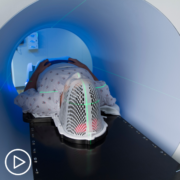
|

Expert Advice for Newly Diagnosed Head and Neck Cancer Patients |

What Do Patients Need to Know About Head and Neck Cancer Research? |
Transcript:
Katherine Banwell:
How is head and neck cancer treated?
Dr. Jessica Geiger:
The thing about head and neck cancer is even if it’s a very early-stage cancer, certainly if it’s a later stage with very big tumors that have spread, even the small cancers are often treated with many different modalities, many different medical specialties and surgical specialties. So, primarily, it’s going to be treated with head and neck surgery, sometimes with radiation, and then of course, you can require some systemic therapy which is what I do. And systemic therapy could be standard chemotherapy as you think about it. It could be targeted therapy. It could even be immunotherapy.
Katherine Banwell:
Okay.
Dr. Jessica Geiger:
And sometimes we have to use two or three of those different tools to get the job done.
How Is Research Advancing Myeloma Treatment and Care?
How Is Research Advancing Myeloma Treatment and Care? from Patient Empowerment Network on Vimeo.
A panel of myeloma experts, including Drs. Omar Nadeem, Irene Ghobrial, and Betsy O’Donnell, discuss how clinical trials advance myeloma research and share an update on promising therapies in development.
Dr. Omar Nadeem is the Clinical Director of the Myeloma Immune Effector Cell Therapy Program and Associate Director of the Multiple Myeloma Clinical Research Program at the Dana-Farber Cancer Institute. Learn more about Dr. Nadeem.
Dr. Irene Ghobrial is Director of the Clinical Investigator Research Program at Dana-Farber Cancer Institute and Professor of Medicine at Harvard Medical School. Learn more about Dr. Ghobrial.
Dr. Betsy O’Donnell is Assistant Professor of Medicine at the Dana-Farber Cancer Institute specializing in Plasma Cell Disorders.
Related Programs:
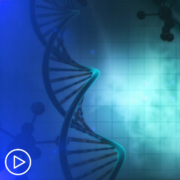
|

|
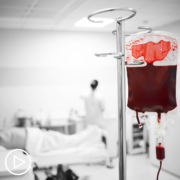
Which Myeloma Patients Are Candidates for CAR-T Cell Therapy? |
Transcript:
Katherine Banwell:
Where do clinical trials fit into a patient’s treatment plan?
Dr. Omar Nadeem:
Yes. So, clinical trials as a term, a lot of times patients have a lot of questions about what that means. There’s a lot of misconceptions, I would say.
Sometimes patients think they will get either a placebo and they won’t get the adequate treatment, or that they may not get the right treatment, right, because they’re taking a chance going on a clinical trial. It’s actually the opposite. So, all the trials are really designed to improve upon what we already know works in a particular disease, right? So, when we think about trials let’s say in relapsed myeloma, where the patient has already had some of the approved therapies, we’re looking at the most promising new therapies that have shown efficacy either in the lab or first in human studies and then moving them through the different phases and studying them in more and more patients.
And that’s how all these drugs get started, right? So, they all get started at that point and then make their way to earlier lines of therapy.
Then you’re trying to answer different questions as part of clinical trials. So, which one of these therapies can I combine, for example. Which ones can I omit, which ones – so, they’re all sort of getting the standard therapy and getting something either added on top of it or removed, depending on what the question that we’re asking.
And then in the world that we currently live in with precursor plasma cell disorders, as Dr. Ghobrial mentioned, we have lots of patients that are at high risk of developing multiple myeloma in their lifetime, and that could be in a few years to a decade. And a lot of these therapies are so effective, and we’re now trying to really study some of these rationally in that patient population, so that’s a very different clinical trial, for example, than what I described earlier.
So, it really depends on what you’re trying to achieve and where you are in the phase of your disease.
Katherine Banwell:
This next question is open to all of you. Are there therapies in development that are showing promise for patients with myeloma? Dr. O’Donnell, let’s start with you.
Dr. Betsy O’Donnell:
Yes. So, I think we are so fortunate in multiple myeloma to have so much interest in our disease and so many great drugs developed. So, as Dr. Nadeem was discussing, CAR-T cells are an immunotherapy, the ones that are approved now, we actually are fortunate to have two CAR-T cells approved, target something very specific called B-cell maturation antigen.
We’re now seeing the next generation where we’re looking at other targets on the same cancer cell, that plasma cell, so those are evolving.
Same thing is true in the bispecific antibody space. Again, those target BCMA now, but we have newer bispecifics who look at alternate targets, and really what this does is it gives us different ways of approaching the cancer cell, particularly as you relapse through disease.
Dr. Irene Ghobrial:
I would probably say we’re also getting into targeted therapies and more of personalized, so if you have an 11;14 translocation, venetoclax (Venclexta) would be an amazing drug for that. And the more we can say my own personal myeloma, what’s the best treatment for me, that’s how we’re trying to do it. So, it may not be exactly precision medicine, but we’re getting closer and closer to precision medicine of my myeloma, my specific drugs. And even if people have a 17p deletion, then we would say let’s think of that immunotherapy.
It is truly a renaissance for us, and we’re starting to get into trispecifics, into off-the-shelf CAR-T, into so many new things. Into two different antigens that are expressed for the CAR-Ts. I mean, we are really beginning the era of immunotherapy, and we’re excited to see how much we can go into that because it will completely change myeloma, and hopefully we will cure many patients. We think we have already amazing drugs. It’s a matter of when to use them and who is the right person for this right drug.
Katherine:
What are you hopeful about the future of care for myeloma patients? Dr. Ghobrial, do you want to start?
Dr. Irene Ghobrial:
I’m hopeful that we truly cure myeloma, and no one should ever develop end organ damage.
We should identify it early and treat it early, and no one should ever come in being diagnosed with multiple myeloma.
Katherine Banwell:
Okay. Dr. Nadeem?
Dr. Omar Nadeem:
Yes, I think I definitely agree with what Irene said, and really having a more thoughtful approach to each individual myeloma patient. As I mentioned earlier, we have so many available therapies. I want to be able to know exactly which patients need which path in terms of treatment, and which ones we can maybe de-escalate therapy, right? So, thinking about which patients do well and maybe can get away with not being on continuous therapy, and those that absolutely need it. Identifying them better to give them the best therapy.
Katherine Banwell:
Dr. O’Donnell, do you have anything to add?
Dr. Betsy O’Donnell:
I think we all share a common goal, which is cure, and for those who we can’t cure yet, I think really working on making the experience as good as it possibly can be and focusing on the factors that we can control and optimizing those, both for patients and their caregivers who are in this journey together with the patient.
An Expert’s Perspective on Advanced Non-Melanoma Skin Cancer Research
An Expert’s Perspective on Advanced Non-Melanoma Skin Cancer Research from Patient Empowerment Network on Vimeo.
What’s the latest in advanced non-melanoma skin cancer research? Dr. Sunandana Chandra shares an update on emerging treatments and provides reliable resources for research news.
Dr. Sunandana Chandra is a medical oncologist and Associate Professor of Medicine at Robert H. Lurie Comprehensive Cancer Center of Northwestern University. Learn more about Dr. Chandra.
Related Resources:

What Are Treatment Goals and Considerations for Advanced Non-Melanoma Skin Cancer? |

A Review of Current Advanced Non-Melanoma Skin Cancer Treatment Options |

|
Transcript:
Katherine:
Are there developments in advanced non-melanoma skin cancer treatment and research that patients should know about?
Dr. Chandra:
So, you know, in the past, as a medical oncologist, we used to use a lot of chemotherapy.
So, these are drugs that are notoriously hard to tolerate. Patients, understandably, are fearful of them and many of them don’t want them. They’ve seen friends and family go through them. And frankly, they have not been the most effective or efficacious in treating non-melanoma skin cancers, traditionally. But in the past, that’s all we had.
Now, we actually have much better therapies, specifically, the category of drugs called immunotherapy drugs that really boost a person’s own immune system to fight the cancer. These drugs are fairly new in the cancer world, and certainly new in the non-melanoma skin cancer world, and so, many of our colleagues in the community may not necessarily think of them when they’re considering patients.
Perhaps, a lot of our patients haven’t even gotten a chance to hear about them. So, yes. There are new developments that I think are worth considering earlier and earlier in the course of a person’s treatment course. And so, I think an earlier referral to these multidisciplinary team members, including a medical oncologist, may not be a bad idea.
Katherine:
How can patients stay up-to-date on developing research? What’s available for them?
Dr. Chandra:
So, you know there are skin cancer patient advocacy websites that they can check out, skincancer.org. I always tell patients to be careful about what website they’re checking, because I certainly want them to go to a website that’s reputable, that’s vetted, that is something that we think has accurate information that’s evidence-based.
And so, AIM at Melanoma has a non-melanoma skin cancer educational website. It’s called SCERF, which is Skin Cancer Education and Research Foundation, and you can find that through the aimatmelanoma.org website. You can look at skincancers.org, you can try with American Cancer Society, or you can even ask your clinical care team and see if they have any suggestions. There’s a lot of resources out there. I would just urge our patients to be careful in what source they’re looking at just make sure that they’re getting accurate, evidence-based information.
Advice for Accessing Financial Resources for Lung Cancer Care
Advice for Accessing Financial Resources for Lung Cancer Care from Patient Empowerment Network on Vimeo.
Is there financial assistance available for lung cancer patients? Lung cancer expert Dr. Jyoti Patel shares support resources and tips to help reduce the financial burden of treatment.
Jyoti Patel, MD, is Medical Director of Thoracic Oncology and Assistant Director for Clinical Research at the Robert H. Lurie Comprehensive Cancer Center of Northwestern University. She is also Associate Vice-Chair for Clinical Research and a Professor in the Division of Hematology and Oncology at Northwestern University Feinberg School of Medicine. Dr. Patel is a leader in thoracic oncology, focusing her efforts on the development and evaluation of novel molecular markers and therapeutics in patients battling non-small cell lung cancer. Learn more about Dr. Patel.
See More from Thrive Lung Cancer
Related Resources:

|

|

|
Transcript:
Katherine:
Dr. Patel, we’d be remiss if we didn’t bring up financial concerns.
Treatment and regular appointments can become quite expensive. So, understanding that everyone’s situation is different, where can patients turn to if they need resources for financial support?
Dr. Patel:
When your team first talks to you about therapies, it’s important that they have transparency about what something may cost or the risks that you may incur by starting treatment. However, most of us have access to wonderful financial teams and financial counselors that can help you manage this.
Many of our industry partners and friends are able to have assistance programs to provide oral drugs at discounted rates or to work, again, with organizations in which you may be able to have reduced rates for many of your drugs. Most of the infusional drugs, again, should be covered by insurance. But outside of drug costs, there are a lot of other costs.
So, parking every time you come for a doctor’s appointment. Time off from work. Time that you’re hiring a babysitter to take care of your children when you’re at treatment. All of those add up. And so, again, perhaps talking to the social worker at your cancer center or talking to the financial counselor, there are often local programs that can help ease some of those burdens.
Tips for Managing Lung Cancer Anxiety and Worry
Tips for Managing Lung Cancer Anxiety and Worry from Patient Empowerment Network on Vimeo.
Lung cancer expert Dr. Jyoti Patel shares support resources to help ease anxiety and explains how multidisciplinary care teams, including palliative care, can support patients and family members.
Jyoti Patel, MD, is Medical Director of Thoracic Oncology and Assistant Director for Clinical Research at the Robert H. Lurie Comprehensive Cancer Center of Northwestern University. She is also Associate Vice-Chair for Clinical Research and a Professor in the Division of Hematology and Oncology at Northwestern University Feinberg School of Medicine. Dr. Patel is a leader in thoracic oncology, focusing her efforts on the development and evaluation of novel molecular markers and therapeutics in patients battling non-small cell lung cancer. Learn more about Dr. Patel.
See More from Thrive Lung Cancer
Related Resources:

|

|

|
Transcript:
Katherine:
Managing the worry associated with a diagnosis or concerns about progression can lead to anxiety and fear in some patients. So, why is it important for patients to share how they’re feeling with their healthcare team? And who all is in the healthcare team who would be able to help a patient?
Dr. Patel:
So, the anxiety of cancer therapies, of CT scans, of tumor assessments, can be overpowering. And then the longer-term anxieties. Who’s going to care for me, who’s going to care for my family, am I doing the things that are important to me, are ones that weigh heavily on all of us.
So, certainly, again, carrying these anxieties over a long time have adverse impacts. So, people who are more anxious may not sleep as well. They may lose weight. They may not be as robust. And so, all of those things weigh into our ability to give more treatment. So, we want people to be psychologically well. We have, generally now in our healthcare teams, a number of people who are there to help.
And so, we have nurse navigators. Most cancer centers have a number of psychologists and psychiatrists that work with our teams. But more than that, even things like nutritionists and social workers make a significant impact. And then I’m surely lucky to work with a world-class palliative care team.
So, these are doctors that really focus on symptoms of cancer, the toxicities of treatment. And we work together to ensure the best outcome for our patients.
Advice for Managing Lung Cancer Symptoms and Treatment Side Effects
Advice for Managing Lung Cancer Symptoms and Treatment Side Effects from Patient Empowerment Network on Vimeo.
Lung cancer expert Dr. Jyoti Patel explains common symptoms and treatment side effects, and discusses how treatment approaches may vary depending on treatment goals for each patient.
Jyoti Patel, MD, is Medical Director of Thoracic Oncology and Assistant Director for Clinical Research at the Robert H. Lurie Comprehensive Cancer Center of Northwestern University. She is also Associate Vice-Chair for Clinical Research and a Professor in the Division of Hematology and Oncology at Northwestern University Feinberg School of Medicine. Dr. Patel is a leader in thoracic oncology, focusing her efforts on the development and evaluation of novel molecular markers and therapeutics in patients battling non-small cell lung cancer. Learn more about Dr. Patel.
See More from Thrive Lung Cancer
Related Resources:

|

|

|
Transcript:
Katherine:
Symptoms and side effects can sometimes be a burden to patients undergoing treatment. What are the most common issues that patients face?
Dr. Patel:
So, common symptoms from treatment can include fatigue, lack of appetite, disinterest in the things that made you really excited before. Infrequently now we have severe nausea, because we have such good antinausea medications.
Sometimes we’ll have problems with blood counts or risks of infection. All of these vary by the treatment that’s rendered. And so, often it may be that you’re on a targeted therapy.
Some targeted therapies, for example, can cause swelling in your legs. Immunotherapies are generally well-tolerated but can cause significant side effects in a small minority of people that could include inflammation in the gut, for example.
So, everything is sort of tailored, I would say. Most frequently, I hear about the fatigue, and then the ongoing stressors of living with cancer. So, the financial toxicity certainly. These drugs are expensive. But not only that, often people have changed the way they work. Their family members have changed how they work to support their loved one. So, bringing people to appointments.
There’s a lot on someone’s plate. And that can contribute to fatigue and even some anxiety.
Katherine:
Yeah. What strategies are in place to manage symptoms and side effects?
Dr. Patel:
So, having a patient who’s knowledgeable about potential side effects and a good advocate for themselves is probably the best way to manage therapy. So, ongoing dialogue with your clinical team, with your nurse, with your physician, are absolutely important. But most of us work with teams of healthcare workers. And so, when I think about our clinic, we have financial counselors, we have social workers, we have dieticians and nutritionists, we work with physical therapists. And importantly, we work with a palliative care team that helps us, again, manage some of the toxicities of therapy.
We think that they provide a longitudinal assessment of patients and remember what’s most important to a patient over time. Whereas often in the moment there’s this, we want to make the tumor shrink. We think about what we can do immediately. It’s often really helpful to have another team that can provide support over the patient’s journey to help us, again, prioritize what they wanted to do the most.
Katherine:
Mm-hmm. Dr. Patel, why do you think it’s necessary for patients to tell their doctor about any issues they may be having? Even the little ones.
Dr. Patel:
I think most of us want to be good patients. And so, we minimize things because we think that, okay, we’re using precious time to talk about things that may seem minor. But, again, all of these add up.
Even minor symptoms, particularly in the era of immunotherapy, can turn out to be big problems. So, as I say now to my patients particularly on immunotherapy, if something seems a little bit off and you can’t put your finger on it, I just need to know so I can at least do the appropriate workup to make sure that we’re not missing anything. Because symptoms of underlying problems can be very misleading.
Moreover, I think the cumulative burden of cancer. So, again, we talked a little bit about the financial toxicity, the emotional cost, the time involved in treatment, all of that adds up. And you never want to get it to a breaking point. We want to manage it early on, so we can, again, make decisions together and keep wellness and the quality of survival at the forefront.
Personalized Medicine | Making Lung Cancer Treatment Decisions
Personalized Medicine | Making Lung Cancer Treatment Decisions from Patient Empowerment Network on Vimeo.
Lung cancer expert Dr. Jyoti Patel explains how biomarker testing is used to guide treatment decisions and personalize care plans for patients.
Jyoti Patel, MD, is Medical Director of Thoracic Oncology and Assistant Director for Clinical Research at the Robert H. Lurie Comprehensive Cancer Center of Northwestern University. She is also Associate Vice-Chair for Clinical Research and a Professor in the Division of Hematology and Oncology at Northwestern University Feinberg School of Medicine. Dr. Patel is a leader in thoracic oncology, focusing her efforts on the development and evaluation of novel molecular markers and therapeutics in patients battling non-small cell lung cancer. Learn more about Dr. Patel.
See More from Thrive Lung Cancer
Related Resources:

|
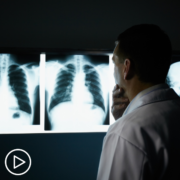
|
Transcript:
Katherine:
Since no two people with lung cancer are the same, how do you decide which treatment is best for each patient?
Dr. Patel:
So, the process of evaluating a patient can actually take a little bit of time. So, we first meet a patient, and they may have suspicious findings. We want to understand the full stage of their cancer. And so, in 2022, that’s doing an MRI of the brain, a CT of the chest and abdomen, and often times a pet scan to look for any evidence of distant disease.
So, once we have radiographic modeling of where we think the tumor is, sometimes we need to do a repeat biopsy to confirm whether or not lymph nodes are involved or the cancer has spread. After we do the biopsy and say that it’s non-small cell lung cancer or small cell lung cancer, we make decisions about looking for genetic markers.
And so, we’ll often take the tumor tissue and stain for things like PD-L1, which is a marker of response to immunotherapies.
Very importantly, with all these new targeted therapies, we want to understand the genetic makeup of cancer. So, we want to look for things like EGFR mutations or ALK translocations which are more effectively treated with targeted therapies than chemotherapy or immunotherapy.
So, those are the tumor characteristics. But, again, I’ve said before, a tumor exists in a person.
And so, you need to understand what’s important to the person, what do they prioritize, what’s their health like, what, again, are the preferences, are there other comorbidities that could perhaps make some treatments more difficult? Many people, for example, have autoimmune disease. And so, that can be something that’s relatively minor, like some psoriasis that is well-controlled versus perhaps lupus which can cause organ failure.
Often with psoriasis there are ways that we can give immunotherapy safely. Sometimes other autoimmune diseases would put patients at very high risk with immunotherapies. And so, again, understanding the overall health, understanding other competing causes of toxicity, are absolutely important as you make decisions together.
Katherine:
Yeah. It seems like we’re getting closer to personalized medicine. For you, how would you define that term?
Dr. Patel:
Personalized medicine comes in two forms. So, one is the biologics of the tumor itself. So, what do I understand about the genetic markers, the likelihood of response to the available therapies. The other piece, again, is personalizing it to the person that has the cancer.
And so, again, what are the preferences? What are the risks they’re willing to take? What are their goals? What are the preferences?
Emerging Therapies | Hope for the Future of Lung Cancer Care
Emerging Therapies | Hope for the Future of Lung Cancer Care from Patient Empowerment Network on Vimeo.
Lung cancer expert Dr. Jyoti Patel provides updates about emerging research and shares her impressions about the future of lung cancer care.
Jyoti Patel, MD, is Medical Director of Thoracic Oncology and Assistant Director for Clinical Research at the Robert H. Lurie Comprehensive Cancer Center of Northwestern University. She is also Associate Vice-Chair for Clinical Research and a Professor in the Division of Hematology and Oncology at Northwestern University Feinberg School of Medicine. Dr. Patel is a leader in thoracic oncology, focusing her efforts on the development and evaluation of novel molecular markers and therapeutics in patients battling non-small cell lung cancer. Learn more about Dr. Patel.
See More from Thrive Lung Cancer
Related Resources:

|

|

|
Transcript:
Katherine:
I’d like to talk about emerging treatments. Are there any therapies in development that patients should know about that you’re excited about?
Dr. Patel:
There are a number of things that are happening right now in the landscape that is really, again, giving us great optimism about how to move forward. So, areas of active research really concentrate on identification of new targets so that we have identified oncogenes that we’re trying to treat effectively. So, those are things like EGFR Exon 20 mutations or HER2 mutations, as well as some of these new fusions.
Another area of rapidly growing research is that most patients who have targeted therapies will eventually develop resistance. And so, understanding how to mitigate resistance or how to overcome resistance is important. And we often talk about the different drugs in development as first-, second-, and third-generation drugs in the EGFR space, which accounts for about 15 percent of lung cancers in the United States. We’re looking at fourth-generation tyrosine kinase inhibitors. They’re certainly very exciting.
The other piece, I think, of research that is moving and that we are looking forward to understanding why some patients have really robust responses to immunotherapies and others don’t. Or how people become immune to the effects of immunotherapy. And so, understanding the tumor microenvironment, seeing if there are other proteins that we can co-stimulate to cause these robust and durable responses to immunotherapy is an area that we’re working on.
Katherine:
Before we close, I’d like to ask, are you hopeful about the potential for people with lung cancer to thrive?
Dr. Patel:
Absolutely. The future is bright after years of working and really developing this great foundational science.
We are seeing the transformation of cancer care in a way that is faster than I could’ve ever imagined at the beginning of my career. We’re bringing scientific insights to the bedside. And bringing it to the bedside is impacting how patients live with their cancer and thrive with their cancer. They’re living longer and with fewer toxicities and side effects than I ever imagined.
I’m optimistic about the promise of early detection through blood tests one day, through screening with CT scans to find early-staged disease in which the cancer is the most curable. And then for patients with more extensive disease, to really understand how we can sequence therapies or deescalate therapies when patients have minimal burden of disease, again, to decrease the toxicities
Tips for Managing Your Oral Lung Cancer Treatment
Tips for Managing Your Oral Lung Cancer Treatment from Patient Empowerment Network on Vimeo.
What happens if you miss a dose of your oral therapy? Lung cancer expert Dr. Jyoti Patel shares advice for managing oral lung cancer treatment for optimal patient care.
Jyoti Patel, MD, is Medical Director of Thoracic Oncology and Assistant Director for Clinical Research at the Robert H. Lurie Comprehensive Cancer Center of Northwestern University. She is also Associate Vice-Chair for Clinical Research and a Professor in the Division of Hematology and Oncology at Northwestern University Feinberg School of Medicine. Dr. Patel is a leader in thoracic oncology, focusing her efforts on the development and evaluation of novel molecular markers and therapeutics in patients battling non-small cell lung cancer. Learn more about Dr. Patel.
See More from Thrive Lung Cancer
Related Resources:

|

|
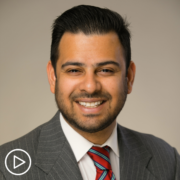
|
Transcript:
Katherine:
Are some of the targeted therapies taken orally? And if so, are patients in charge of administering them, their own therapies?
Dr. Patel:
Many of the targeted therapies that are most effective are taken orally. And so, patients take them at home. Often, they’ll have once-daily dosing or twice-daily dosing. The number of pills often depends on the formulation of the drug. So, patients are responsible, I guess, for taking them. That comes with a lot. So, we need to think about, how do we help with adherence? How do we manage toxicity? How are the drugs affected by whether you eat or take the drug on an empty stomach? There are a lot of nuances there.
Generally, we like to give a lot of information to our patients. So, often, patients will meet with a pharmacist when they’re first prescribed the medication. They’ll meet with our nurses to go over how to take those and how to manage any side effects if they have them or what to do if there are any adverse reactions.
Katherine:
Mm-hmm. Well, what would happen if a patient forgets to take one of their medications? Does that impact its effectiveness? And then should they get in touch with their healthcare team to let them know?
Dr. Patel:
So, generally, we like patients to take the medication almost at the same time every day. We sort of think about half-life. So, we want to make sure that that serum level stays appropriate. If someone misses a dose – which happens – and, again the best-case scenario is that people are on these pills for years, right? For several years. So, of course, you’re going to miss a dose. If that happens, we generally tell people never to double up.
To let your team know. Often you can just skip that dose and take it in the evening or the next day.
How Is Lung Cancer Treated?
How Is Lung Cancer Treated? from Patient Empowerment Network on Vimeo.
Lung cancer expert Dr. Jyoti Patel provides an overview of lung cancer treatment approaches, including radiation therapies, targeted therapies, immunotherapy, chemotherapy, and surgery.
Jyoti Patel, MD, is Medical Director of Thoracic Oncology and Assistant Director for Clinical Research at the Robert H. Lurie Comprehensive Cancer Center of Northwestern University. She is also Associate Vice-Chair for Clinical Research and a Professor in the Division of Hematology and Oncology at Northwestern University Feinberg School of Medicine. Dr. Patel is a leader in thoracic oncology, focusing her efforts on the development and evaluation of novel molecular markers and therapeutics in patients battling non-small cell lung cancer. Learn more about Dr. Patel.
See More from Thrive Lung Cancer
Related Resources:

|

|

|
Transcript:
Katherine:
I’d like to walk through the types of treatments that are used today to treat lung cancer. Let’s start with surgery.
Dr. Patel:
We think about local therapies as things like surgery. So, surgery has evolved, again, significantly.
Now with videoscopic approaches and robotic approaches we’re able to remove a tumor either with a larger incision – more traditional incision – or some of the smaller incisions. And the goal of doing the surgery is often to want to diagnosis the cancer. So, to do a biopsy. But when it’s used in terms of cancer treatment, the goal of surgery is to get a complete resection.
So, we only do surgery if we can remove a tumor and mass with clear margins and not compromise other vital functions. Sometimes we’ll, again, do a more palliative surgery if we need to, if there’s a problem that’s causing significant symptoms. But in that case, the surgery is generally not improving the survival of the patient. It’s trying to palliate symptoms.
Katherine:
Mm-hmm. What about other types of therapy?
Dr. Patel:
Other localized therapies predominately include radiation therapy. And, again, radiation has significantly changed over the past years. We’ve been able to incorporate new technologies, truly target tumors, and to minimize toxicity, with two kinds of radiation. Photon therapy, which is more traditional therapy, and proton therapy, which we see administered in a very small subset of patients.
Primarily, photon therapy, we treat tumors, sometimes over many weeks, to decrease toxicity versus sometimes we give one or two doses of radiation in a high-dose fashion that’s very targeted. So, often for the chest in stage III cancer, for example, a patient may end up getting six weeks of radiation Monday to Friday with chemotherapy.
And that, again, is curative intent. It’s to ablate the cancer and to provide the best local treatment.
Often, we’ll do something called stereotactic radiation therapy. And that is if there is a discreet mass, often that could be if the cancer is metastasized to the brain, we can give very targeted radiation there, again, to ablate the tumor.
In patients who may not be candidates for surgery because lung surgery is a big deal, right? Removing part of your lung can lead to morbidity in someone with other medical issues. Sometimes we can use pinpoint radiation in the lung and see really good outcomes for patients with good disease control.
Katherine:
You’re also using chemotherapy still, I would imagine?
Dr. Patel:
The other part of treatment for lung cancer are systemic therapies. And there a number of systemic therapies. So, I sort of break it down into three major parts. One is chemotherapy. Chemotherapy remains a backbone of treatment for lung cancer.
It’s a lot more tolerable and much more personalized than ever before. Often chemotherapy can be given to patients without significant toxicities. Not everyone loses their hair. Not everyone has neuropathy. Often, I have patients who are working and taking care of their families on chemotherapy. So, it is a good and very reasonable option. But two things that we’re really most excited about – and I think have changed the field most dramatically – are targeted therapies and immunotherapies.
Katherine:
Mm-hmm.
Dr. Patel:
These targeted therapies are rationally designed molecules or antibodies that block proteins that may be overexpressed in lung cancer.
So, some of them are the byproducts of mutated genes that are upregulated and causing a cancer to grow. Others may just be that we’re seeing a high level of protein expression on the cancer cell. But these targeted therapies preferentially bind to their targets that are present on cancer cells and not so much normal cells. Because of this, often there is less toxicity to normal cells. But because we can find specific targets – and the best targets are ones that are only expressed on cancer cells.
But because we can find a direct target, sometimes we’re able to design drugs that may have significant efficacy. So, 80 percent or 90 percent of people who have a particular target and are able to get a targeted therapy may have a response to treatment. Targeted therapy can be great for some patients. And patients may be on oral medications, sometimes for years, to control their cancer.
The other real game-changer in the past decade for lung cancer has been the integration of immunotherapy. Approved immunotherapies currently are primarily antibodies that we give to patients. And these antibodies block proteins that are expressed by cancer cells which downregulate the immune system. By shutting down these proteins, your own immune system is able to kind of re-see the cancer cell and kill it.
And so, now we know in patients with more advanced disease that immunotherapy or immunotherapy with chemotherapy leads to better outcomes than we’ve ever seen. We also use immunotherapy for patients with stage III lung cancer after chemotherapy and radiation. And this improves their survival significantly.
And most recently, we’ve now integrated immunotherapy after surgery for patients with early-staged disease to decrease their chance of relapse from cancer.
Katherine:
So, are there options for relapsed patients?
Dr. Patel:
So, absolutely. Most of our therapies in the metastatic setting work for some time. And then cancer is a difficult adversary. It figures out how to overcome whatever strategy we’re using and becomes resistant. When that happens, often we need to change course. We need to try a new therapy. We have a number of therapies that we’re looking at in the first- and second-line settings. And we’re trying to understand best therapies for subsequent lines of treatment.
Generally, I say treatment is appropriate if you’re feeling pretty well, right? If you’re able to tolerate treatment, then the likelihood that you would be able to benefit from therapy is significant. How that changes over time weighs heavily on our decision. So, if someone’s having more fatigue or more symptoms from their cancer, it may be that even a little bit of toxicity proves too much.
Whereas if someone is feeling still really good, we may be willing to say, okay, I’m going to take a little bit more of a risk for the benefit of improved cancer control.




